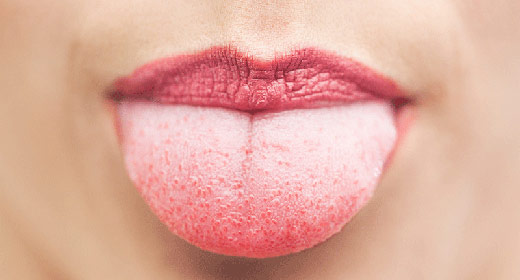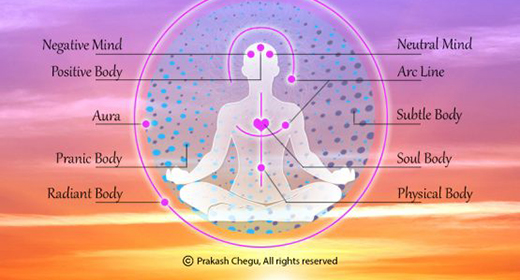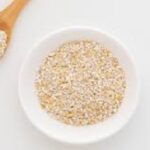by Michelle Toole: One of the most common questions that people ask about acupuncture is: “Why does my acupuncturist look at my tongue?”

Tongue and pulse diagnosis are two of the more important diagnostic tools in Chinese medicine. They are both used to derive a TCM diagnosis for your condition which is used to plan your treatment. Generally the tongue, is much easier to learn and less subjective than pulse diagnosis. It is less meridian specific than the pulse, however, the tongue will show the depth and nature (hot, cold, etc.) of an imbalance and it is less effected by short-term influences such as nervousness. The tongue is also useful as a measurement tool to gauge the progress of a disorder.
Common Tongue Geography and Meridian Correlations
¤ Lower Jiao
The Base of the tongue corresponds to the Kidney, Urinary Bladder, Large Intestine and Small Intestine Meridians.
¤ Middle Jiao
The sides of the tongue correspond to the Liver and Gall Bladder meridians. Some theories place the Gall Bladder on the patients left side and the Liver on the patients right side.
The Middle of the tongue corresponds to the Stomach and Spleen Meridians.
¤ Upper Jiao
The Tip of the tongue corresponds to the Lung and the Heart


How Can the Tongue Change?
|
TONGUE BODY |
|||
|
Attribute |
Characteristic |
Indication |
Abnormality |
|
Spirit |
Vitality of the tongue |
Zang, Fu, Qi, Blood, Body Fluids |
Flourishing: bright with energetic movement and moist indicates good Stomach Qi |
|
Withering: dark and dry tongue with sluggish movement indicates exhausted Stomach Qi |
|||
|
Colour |
Reflects true condition of body |
Thermal nature of the disease |
More Red: Blood overfills tongue, more heat |
|
Less Red: Qi and blood are insufficient, less heat, more deficiency |
|||
|
Texture |
Tough or tender |
Reflects excess or deficiency |
Rough: exuberant antipathogenic Qi and muscle fibers bulge |
|
Tender: Qi and Blood are deficient and cannot fill fibers; Yang deficiency cannot transform body fluids and cold-damp accumulates |
|||
|
Size |
Large or Small |
Often reflects constitution |
Large: overfilling of Blood, damp accumulation |
|
Small: lack of nutrition due to Qi, Blood and Body Fluid Deficiency |
|||
|
Surface |
Moist, smooth |
Body Fluids, heat, stasis |
Cracks: malnourishment of Qi, Blood and Body Fluids due to heat or dampness obstructing |
|
Prickles: heat pushes Qi and Blood up where they overfill the tongue causing papillae to thrust out |
|||
|
Flexibility |
How the tongue moves |
Condition of muscles and sinews |
Stiff: lack of nourishment due to internal organ deficiency or phlegm/Blood stasis obstructing Qi and Blood resulting in stiffening of the tongue |
|
Limp: sinews lack nourishment of Qi, Blood and Body Fluids and do not have the strength to move |
|||
|
Movement |
Abnormal movement |
Pathogens or deficiency |
Spasm due to internal wind, usually due to hyperactive Liver, internal heat or malnutrition. Can be trembling, deviated or protruding. |
|
Length |
How long the tongue is |
Pathogens or Internal Organs |
Short: excessive cold causes contraction and spasm; malnutrition causes phlegm to stagnate and obstruct; heat injures Body Fluids; Qi and Blood deficiency due to Spleen and Kidney failure |
|
Long: excess pathogenic heat consumes Qi, Blood and Body Fluids; internal organ failure resulting in the tongue being unable to contract |
|||
|
TONGUE COATING |
||
|
Attribute |
Indications |
Abnormality |
|
Colour |
Pathogenic factors |
White: exterior or cold patterns; targets Lung and Large Intestine |
|
Yellow: interior or heat patterns; targets Spleen and Stomach |
||
|
Gray: interior, heat or cold-damp patterns |
||
|
Black: interior, extreme heat or extreme cold patterns |
||
|
Thickness |
Antipathogenic Qi or depth of disease |
Thin: impaired Spleen or Stomach cannot evaporate and transform dampness; Kidney and Stomach Yin deficiency cannot send up Body Fluids or damp turbidity is sent up. |
|
Thick: Spleen and Stomach are stagnated by food or phlegm damp and turbid damp steam rises |
||
|
Moisture |
Condition of Body Fluids |
Dry: excessive pathogenic heat injures Body Fluids; internal organ dysfunction leads to Yin deficiency |
|
Wet: water damp attacks body due to Spleen or Kidney Yang deficiency cannot transform Body Fluids |
||
|
Stickiness |
Distinguishes pathogenic factors, fluid metabolism |
Damp, phlegm, water or food stagnates and accumulates and the Stomach Qi produces excess turbidity that steams upwards |
|
Distribution |
Location and depth of disease |
Even: widespread pathogen, dampness obstructs middle jiao |
|
Uneven: certain body parts or organs are affected, there will be uneven distribution |
||
|
Peeling |
State of Stomach Qi & Yin |
Deficient Stomach Qi or Yin results in exuberant rising of turbid dampness or Stomach Yang, burning fluids. |
|
Rooting |
Pathogen severity, condition of Stomach Qi & antipathogens |
Rooted: sufficient Stomach Qi that is attached to tongue tightly, difficult to scrape off |
|
Unrooted: insufficient Stomach Qi due to Qi deficiency in the Stomach or Kidney |
||










































